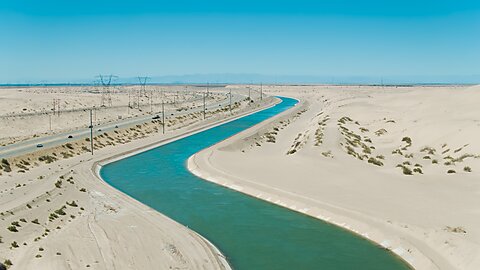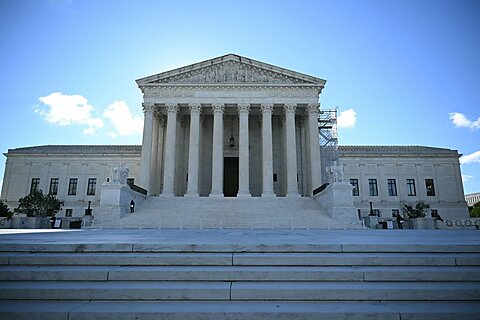
President Donald Trump is making rapid decisions on a wide range of issues. His fingers are into everything. Some actions are misguided and divisive, as were many actions of his predecessor. Modern presidents can be so disruptive because the federal government has amassed so much power over so many activities.
If you are bitter about federal politics, you should consider the libertarian solution, which is to devolve most current federal activities to the states and the people. That would ease tensions by strengthening local democracy and allowing for beneficial diversity across the states.
With Trump, for example, I’m all for him working with Congress to shut down the Department of Education and freeing the states to pursue their own school reforms. But I’m not fond of his recent actions to redirect water flows through California’s complex reservoir and aqueduct systems.
California’s water is supplied by a huge infrastructure of both federal- and state-owned assets. The balancing of water interests—fish vs. farmers vs. cities—is a political hot button. That is why the balancing should take place in water markets and Sacramento, not Washington, DC.
Rather than having a water czar in the White House, I’ve argued that Congress should end federal subsidies, transfer federal water assets to the states, and support water markets to encourage efficient allocation and use.
It is true that Los Angeles bungled its water readiness during the recent wildfires. Trump pounced, issuing an order to “maximize” water deliveries and “override” state policies if needed. Water was released from two federal reservoirs, and Trump proclaimed, “the water is flowing in California … heading to farmers throughout the state and to Los Angeles.”
However, CNN reports:
The newly released water will not flow to Los Angeles, and it is being wasted by being released during the wet winter season.
“They were holding extra water in those reservoirs because of the risk that it would be a dry summer,” said Heather Cooley, director of research for California water policy organization the Pacific Institute. “This puts agriculture at risk of insufficient water during the summer months.”
… “This release is extremely concerning,” Cooley said. “It’s providing zero benefit and putting California farmers at risk of water supply constraints in the coming months.”
California Department of Water Resources director Karla Nemeth told reporters that there was little coordination between federal officials and the state and local water managers for the Army Corps releases at the Terminus Dam at Lake Kaweah and Schafer Dam at Lake Success.
“These reservoirs were federal reservoirs, and the state of California was not part of the decision making in this instance,” Nemeth said. “We traditionally have a high degree of coordination at the operational level, which really wasn’t a part of this decision.”
… Los Angeles’ water sources are completely separated from the water system that Lake Kaweah and Lake Success supply. That water system flows into the agriculture-heavy Central Valley — where large farms grow nuts, citrus and grasses for animal feed, among other crops.
Newsweek had a similar take on Trump’s action:
“These kinds of shenanigans, they hurt smaller farmers,” Dezaraye Bagalayos, a local water activist, told the Los Angeles Times. Small growers have already been struggling, and the release of water from the dams means they will have less when they need it, Bagalayos said.
“The last thing in the world California water management needs is somebody like Trump calling shots when he doesn’t know how anything works,” Bagalayos said. “It’s making an already hard situation very, very difficult. We don’t have a lot of wiggle room in the state of California to be messing around with our water supply like this.”
… Climate and hydrology expert Peter Gleick told CBS: “There is absolutely no connection between this water and the water needed for firefighting in L.A. There’s no physical connection. There’s no way to move the water from where it is to the Los Angeles basin.”
Trump’s intervention in Western waters is somewhat like President Biden’s intervention in Western lands last year. Biden imposed a plan to smother 700,000 acres in the West with solar panels, which would have ruined landscapes and threatened plants and wildlife. Western leaders have long chafed at such heavy-handed federal actions on the lands within their states.
The country would be better off without Republican or Democratic presidents micromanaging resources and programs within the states. Congress should transfer most federal lands and water infrastructure to the states and private sector. And it should eliminate federal programs, such as education programs, that duplicate state-local activities. Decisions over resources and programs should be made as close to the people as possible.
Polls show that Americans have a better view of their state and local governments than the federal government, and they prefer state rather than federal control over education, housing, welfare, and other activities. Moving federal assets and programs to the states would go a long way to easing political tensions and restricting rash presidential actions contrary to local needs and preferences.
See this study for a discussion of federal water policies, and this study for a discussion on reviving federalism.



